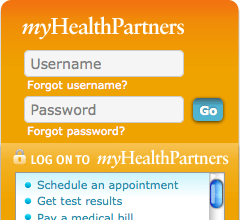 Originally published on MedCityNews.com.
Originally published on MedCityNews.com.
In 2010, entrepreneur Steve Malik achieved the pinnacle of entrepreneurial success when he sold his patient portal company, Medfusion, to Intuit Inc. for $91 million.
 Originally published on MedCityNews.com.
Originally published on MedCityNews.com.
In 2010, entrepreneur Steve Malik achieved the pinnacle of entrepreneurial success when he sold his patient portal company, Medfusion, to Intuit Inc. for $91 million.
Now, three years later, he’s buying it back.
Malik said he sees abundant opportunities in the patient portal market as Meaningful Use stage 3 lingers. Up to this point, engaging patients with portals has been a struggle for providers — even at places like Mayo Clinic. Although rules for Meaningful Use stage 3 have been delayed until next year, draft guidelines proposed earlier this year required that 10 percent of patients would have to communicate with their provider through a portal.
And he thinks Medfusion, now called Intuit Health, has a big advantage in making that happen. “Intuit has invested tremendous amounts of dollars in the long-term potential of the business, particularly in scalability aspects of the solution that as a small company I could not have put the R&D into,” he said.
Malik remained general manager of the Cary, North Carolina-based company for two years after its acquisition, and has been vetting deals with other health IT companies as a venture capitalist over the past several months. That’s where he really saw the company’s advantage in the market, he said.
For example, in the three years that the company has been owned by Intuit, the number of physicians using it has essentially tripled in size, he said. Mobile accessibility was also never a consideration when he sold the company. But Intuit, which makes which makes Quicken and TurboTax software, applied its skills in mobile utilization to create a mobile app, which sees a rate of patient utilization about six times higher than the web version, he said.
In addition, Intuit had been able to apply some of its expertise in automation to Intuit Health’s billing, scheduling and patient engagement solutions. “The single biggest factor holding patients up today is that they have to enter data and no one wants to do that,” Malik said. “We’re making it easier for patients to not have to fill it in and creating more of a ‘do-it-for-me’ environment.”
Ultimately, though, Intuit decided its healthcare software development business didn’t align with the growth model of the company overall and would be better served by a company focused on the healthcare industry. In July, it announced it planned to sell Intuit Health Group. The terms of the deal with Malik were not disclosed.
“I envision a world where providers, after your visit, say ‘here’s an app for you,’” Malik said. An important part of that vision is that data from the patient would also flow back into the EHR. That’s a long way from where it was when he started the company 15 years ago, when the term “patient portal” wasn’t even being used yet. Now, the average Intuit Health customer has about 18 percent of its patients using the portal, he said.
Future plans for growth include making a move into the community health space. “There’s still a lot of movement and opportunity and we’re excited about those growth potentials,” he said. “There are a lot of tethered portals today that work with one EHR vendor, but as you look at consolidation of practices and hospitals, most community systems have multiple IT environments. To be the agnostic leader and work with virtually any HIT is a huge advantage and you’ll see us moving more into that community practice space.”






